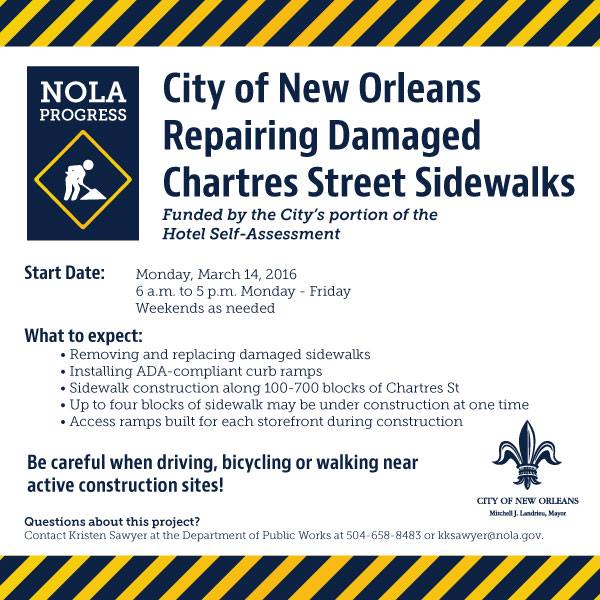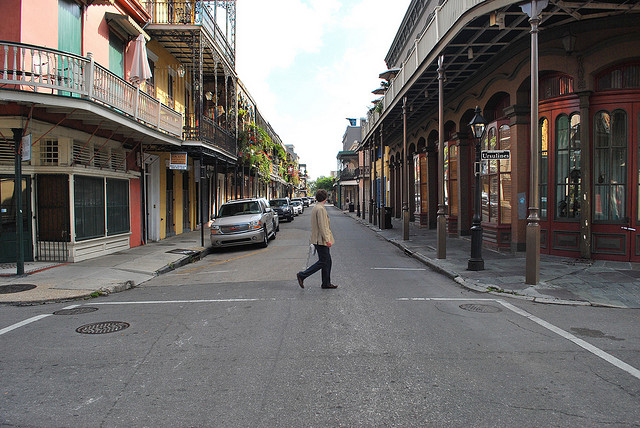There’s nothing quite like walking through the streets of New Orleans and admiring the incredible architecture and history. From the storied French Quarter to the beautiful homes of the Garden District, almost every street in this city tells a story. Though streetcars and cabs can take you through the various neighborhoods, the best way to experience New Orleans architecture and lifestyle is on foot. However, practicing smart pedestrian habits is crucial! Learn how to be a safe while walking below, and keep your eyes peeled for sidewalk improvements happening in the French Quarter.

Sidewalk improvements are underway in the French Quarter.
Pedestrian Safety Tips
1. Light Up the Night. Most pedestrian fatalities occur at non-intersection locations of urban areas at night, and alcohol is a factor in 48 percent of cases. In a city like New Orleans, condition are especially ripe for accidents: with few crosswalks and a laid-back atmosphere, pedestrians may be less likely to take note of their surroundings and also may be less visible to drivers.
One way to protect yourself is by carrying a flash light or wearing reflective clothing. Anything you can do to increase your visibility at night – whether crossing in a well-lit area or investing in reflective armbands – is a step toward safety!

As you explore New Orleans on foot, be sure to practice safe pedestrian habits. (Photo courtesy Aaron Weinstein on Flickr)
2. No sidewalk? No problem. Of course, walking on the sidewalk is the safest option. But, if there is construction or another obstacle preventing you from using the sidewalk, remember this rule from the Centers for Disease Control and Prevention: walk on the shoulder and face traffic. Return to the sidewalk as soon as possible.
3. Determine walkability. Do you have a route you often take on foot? Use the Walkability Checklist from the National Highway Traffic Safety Administration to determine if it’s safe or if you should consider a new footpath. The checklist includes not only ways to immediately improve your pedestrian experience but also long-term solutions like contacting city planners and councilmembers.